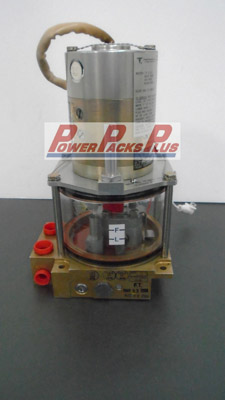Aircraft Parts
Introduction
There are many different types of aircraft parts, and each has a specific function. In this article, we’ll take a look at some of the most important ones. From the cockpit to the engine, learn about the different parts that keep an aircraft up in the sky!
What are aircraft parts?
Aircraft parts are the various components that make up an aircraft. These parts can be divided into three main categories: airframe, powerplant, and avionics. The airframe of an aircraft includes the fuselage, wings, and landing gear. The powerplant of an aircraft provides the propulsion, typically through one or more engines. The avionics of an aircraft include the electronic systems that manage the aircraft’s flight and navigation.
The different types of aircraft parts
There are many different types of aircraft parts, and each plays a vital role in the function and safety of the aircraft. Here is a look at some of the most common aircraft parts:
• Fuselage: The fuselage is the main body of the aircraft, and it houses the cockpit, passenger cabin, and other key components.
• Wings: The wings provide lift and stability to the aircraft, and they are typically attached to the fuselage.
• Engines: The engines provide power to the aircraft, and they are usually mounted on the wings.
• Landing Gear: The landing gear helps to support the weight of the aircraft during takeoff and landing, and it also helps to slow down the aircraft when it lands.
• Tail: The tail helps to stabilize the aircraft in flight, and it is usually attached to the back of the fuselage.
The importance of aircraft parts
As an aircraft mechanic, you know that every part on an airplane is important. But do you know why? Aircraft parts are essential to the safe operation of the aircraft and the comfort of the passengers. Here are a few reasons why:
Aircraft parts keep the aircraft safe. Every part on an airplane has a specific function and purpose. For example, the landing gear helps support the weight of the airplane during takeoff and landing. The engine provides power to fly the plane. And the wings provide lift.
Aircraft parts make flying comfortable. You might not think about it when you’re up in the air, but aircraft parts play a big role in making your flight comfortable. The pressurization system keeps the cabin air at a comfortable pressure. The heating and air conditioning system keeps the cabin temperature just right. And the soundproofing material helps reduce engine noise so you can enjoy a peaceful flight.
Aircraft parts help reduce environmental impact. Today’s airplanes are designed to be more fuel-efficient and have less of an impact on the environment. New materials and technology help reduce emissions and noise levels. And lightweight aircraft parts help save fuel and reduce carbon dioxide emissions.
So next time you’re aboard an airplane
How aircraft parts are made
Aircraft parts are made using a variety of methods, depending on the materials involved and the desired final product. For example, metals may be cast, forged, machined, or formed into shapes using specialised equipment. Non-metallic materials may be molded, shaped, or extruded into parts.
The manufacturing process for aircraft parts is highly regulated to ensure that all parts meet the strictest safety standards. Parts must undergo extensive testing before they can be approved for use on an aircraft. Even after a part has been approved, it must be regularly inspected to ensure that it remains in good condition.
Making aircraft parts is a complex and challenging process, but it is essential to the safe operation of aircraft.
The future of aircraft parts
As the aviation industry continues to evolve, so too must the aircraft parts that keep our planes in the air. With new technologies and materials being developed all the time, it’s important to stay ahead of the curve when it comes to aircraft parts. In this blog, we’ll take a look at some of the latest innovations in aircraft parts and what they could mean for the future of aviation.
One area that is seeing significant advancements is in the area of 3D printing. This technology is being used to create aircraft parts that are lighter and stronger than ever before. By using 3D printing to create parts, there is less waste and less need for expensive tooling. This means that aircraft can be built faster and more efficiently.
Another area of aircraft parts that is seeing innovation is in the area of sensors. Sensors are being used to monitor everything from engine performance to cabin temperature. This data can then be used to improve the performance of the aircraft and make sure that passengers are comfortable.
These are just a few examples of the kinds of innovations that are happening in the world of aircraft parts. As the aviation industry continues to grow, so too will the need for new and innovative aircraft parts.
Conclusion
There are a variety of aircraft parts that work together to keep an airplane in the air. Each part has a specific purpose and must be maintained in order to ensure safe flight. Although there are many different parts, they can all be categorized into four main groups: the powerplant, the fuselage, the wings, and the control surfaces. Understanding how each of these parts works is essential to keeping an airplane flying safely.
- 102559-004 POWER PACK ASSEMBLY – HYDRAULIC
- 102559-003 POWER PACK ASSEMBLY – HYDRAULIC
- 102559-002 POWER PACK ASSEMBLY – HYDRAULIC
- 461-770 POWER PACK ASSEMBLY – HYDRAULIC
- 461-768 POWER PACK ASSEMBLY – HYDRAULIC
- 461-751 POWER PACK ASSEMBLY – HYDRAULIC
- 1FA13059-3 POWER PACK ASSEMBLY – HYDRAULIC
- 1FA13059-2 POWER PACK ASSEMBLY – HYDRAULIC
- 1FA13059-1 POWER PACK ASSEMBLY – HYDRAULIC
- OAS2930-5 POWER PACK ASSEMBLY – HYDRAULIC

